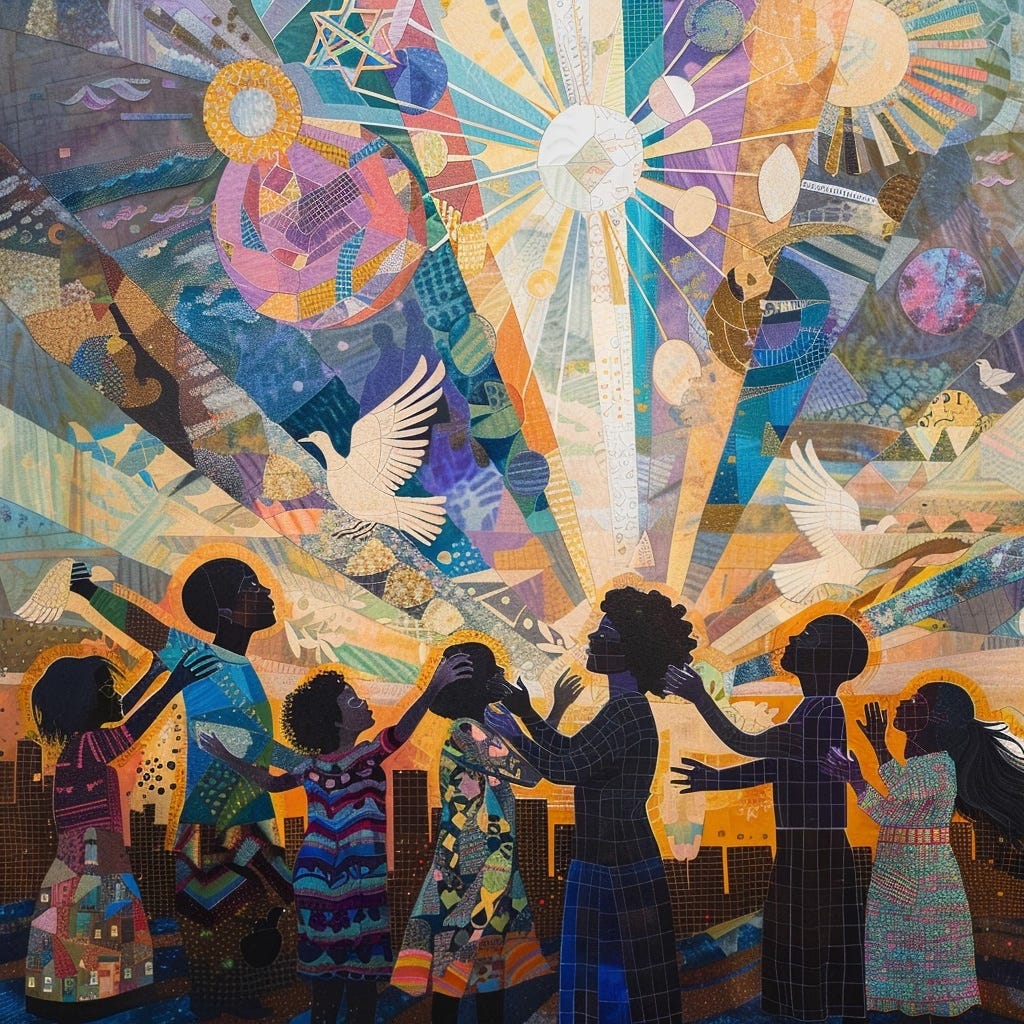The Power from Accepting the Constraints
Radiance comes not from escaping hardship but from embracing life’s constraints with purpose, gratitude, and acceptance—turning limits into quiet strength.
Some people glow. You’ve seen them. They walk into a room and seem to bring light with them. They’re not necessarily rich, or even especially good-looking. But there’s something magnetic about them—like they’ve figured out a cheat code for life. Most people assume that these radiant types have avoided hardship. But usually, the opposite is true. What makes them radiant is that they stopped fighting the constraints life gave them.
It’s one of the weirdest things I’ve noticed as I’ve gotten older: the people who seem the most joyful are often the ones who’ve been through the most. And not just endured it—they’ve made peace with it. Like those martial artists who use their opponent’s weight to throw them, they’ve learned to use their limits as leverage.
Most of us are taught, directly or indirectly, that happiness comes from avoiding hardship. Get the job, the house, the life where nothing ever goes wrong. But that model has a bug. Life does go wrong. Regularly. And if your strategy is to resist or resent that, you’re going to spend most of your life unhappy.
That’s the victim mindset in a nutshell. It’s not that people who think this way are lazy or weak—it’s that they’ve absorbed the idea that suffering means something has gone wrong. And so their mental energy gets tied up in rerunning the unfairness instead of solving the actual problem. They say “why me?” and stop there.
The radiant people don’t say “why me?” They ask “now what?”
The Three-Part Equation
The people I’m talking about seem to follow the same quiet equation: Purpose + Gratitude + Acceptance = Radiance.
Purpose doesn’t mean grand plans. It can be simple. Raising kids well. Helping others. Making beautiful things. What matters is that it’s chosen. Not assigned by culture or guilt or fear.
Gratitude is their emotional operating system. Not the kind you post about on Thanksgiving, but the kind that notices beauty even when things are ugly. They find a way to say thank you for the coffee, for the rain, for the pain, for the fact that they’re still breathing.
And acceptance—this is the hard part. They don’t spin stories about how life should be. They accept it for how it is. Not passively, like giving up. But with curiosity. Like, “Okay, these are the cards. Let’s play.”
Happiness by Culture
You see this in cultures, too. Americans, for all their chaos, have internalized something powerful: that individuals get to choose their story. That your background, your setbacks, even your failures don’t define you. It’s imperfectly applied, but it’s there. A kind of mythic permission to start over.
In Russia, where I’ve spent time, there’s a different story. More fatalistic. The past weighs heavier. The idea of starting over doesn’t quite register the same way. If the system screws you, well, that’s just life. Smile less. Trust less. Hope less. It’s not that Russians are less intelligent or capable—they’re just marinated in a different cultural narrative. One where the constraints are external and immutable. One where your job is to endure, not to grow.
The irony is that both countries are full of constraints. But in one, you’re taught to navigate them. In the other, you’re taught to sit still.
Constraints Are the Game
There’s an idea from game design: a game isn’t fun despite its rules. It’s fun because of them. Imagine chess with no rules. Or basketball where you could teleport. The constraints give the game shape.
Life is the same. You don’t become radiant by avoiding limits. You become radiant by choosing how to play within them. That’s why people who’ve lost limbs can still run races. Why someone with a terminal diagnosis can glow brighter than most healthy people. They’ve accepted the constraints and found a new kind of power inside them.
I knew a guy like this—wheelchair-bound, broke, dealing with constant pain. But he was always grinning. He had this look in his eyes like he was in on some secret. I asked him once how he stayed so positive. He said, “Simple. I stopped asking for life to be different.”
It hit me like a punch. He didn’t say he was happy because of some mystical trick. He just stopped resisting what was true.
Acceptance Isn’t Surrender
When people hear “acceptance,” they often confuse it with surrender. But they’re not the same. Surrender says, “I can’t do anything.” Acceptance says, “I can’t change that, but I can choose my next move.”
That’s where the power is. Not in escaping life’s structure, but in leaning into it. In becoming antifragile—stronger not despite adversity, but because of it.
The most radiant people are basically energy-efficient. They don’t waste time blaming the dealer for their hand. They start playing. And somehow, that act alone—accepting the constraints—transforms them into a source of light for everyone else




